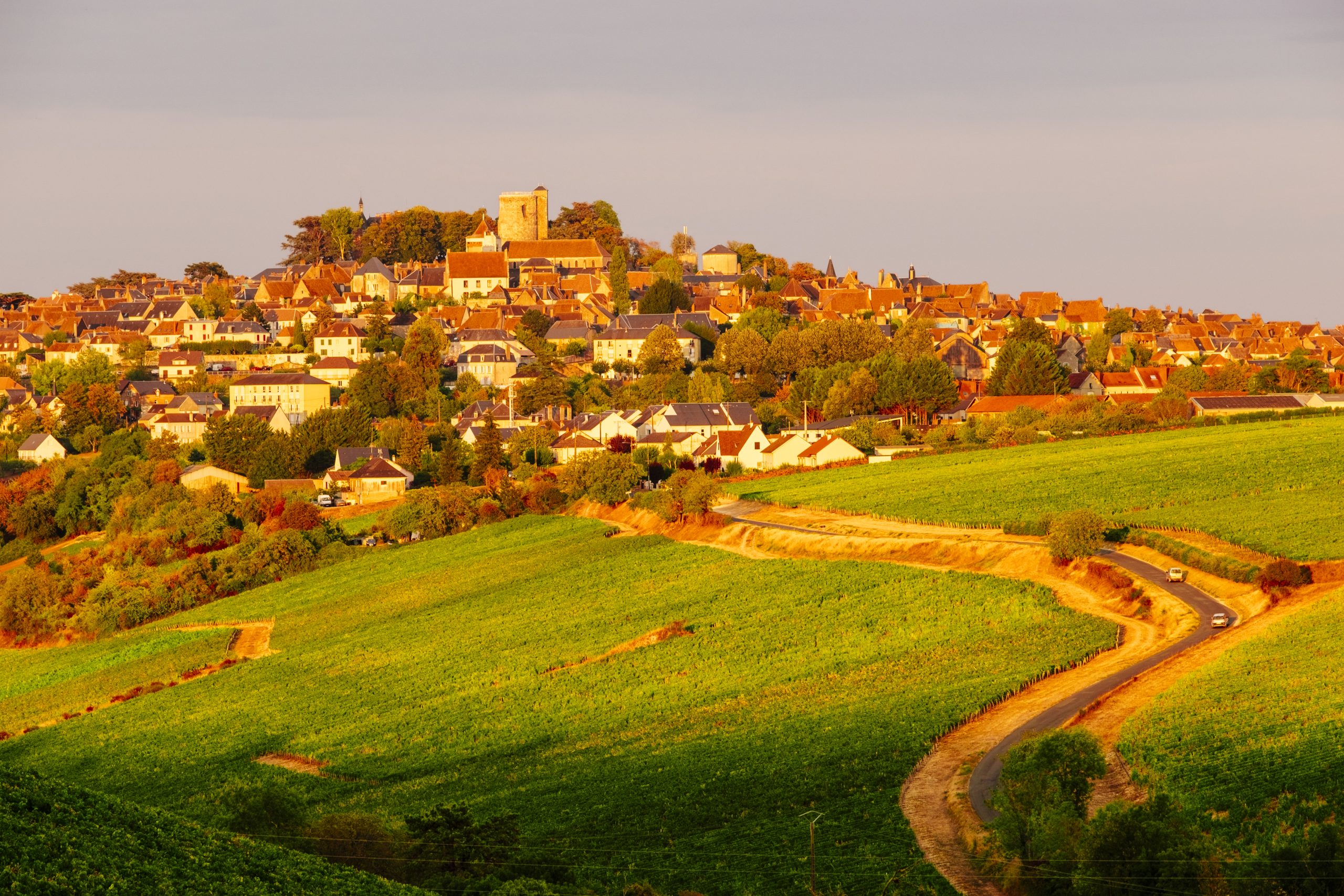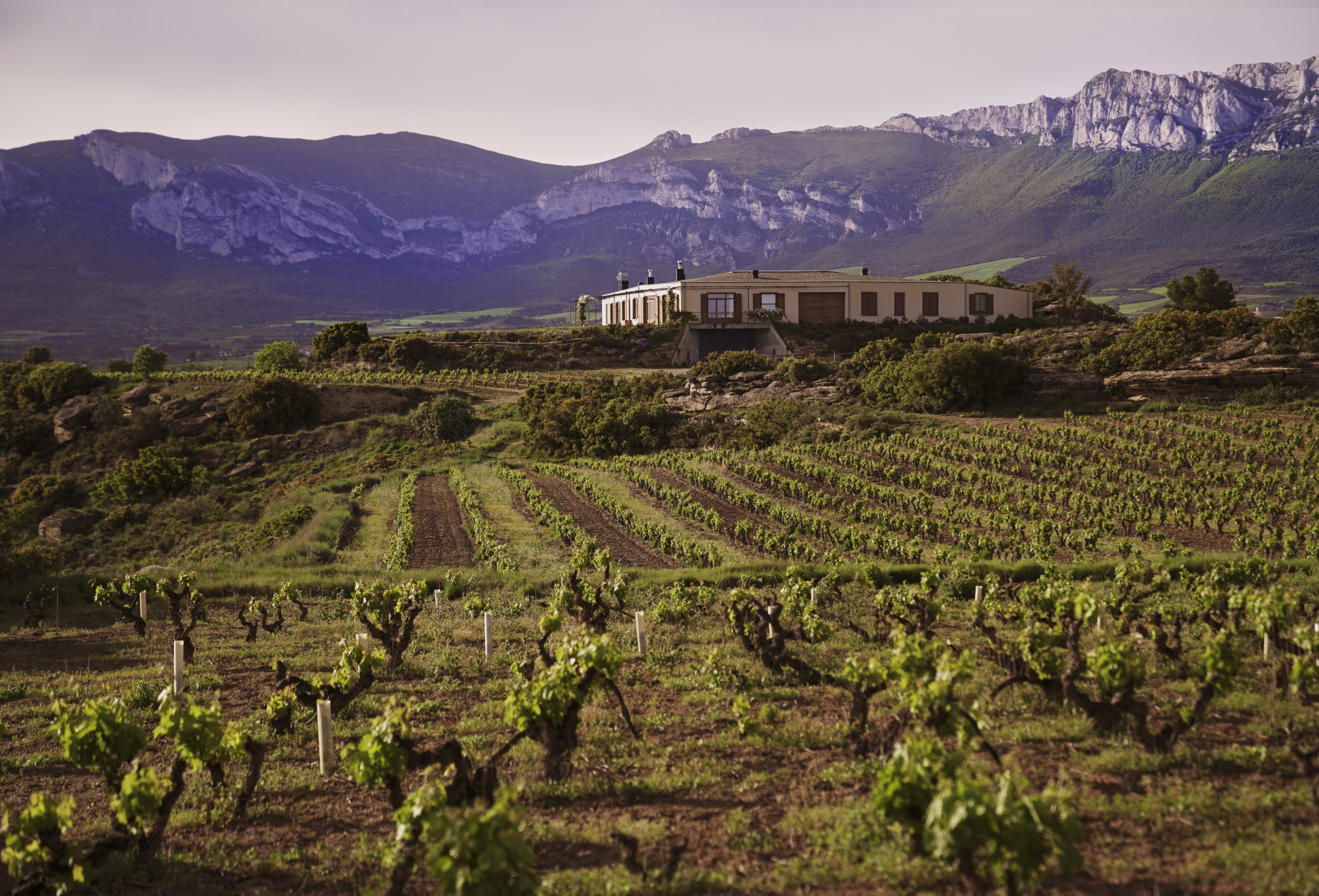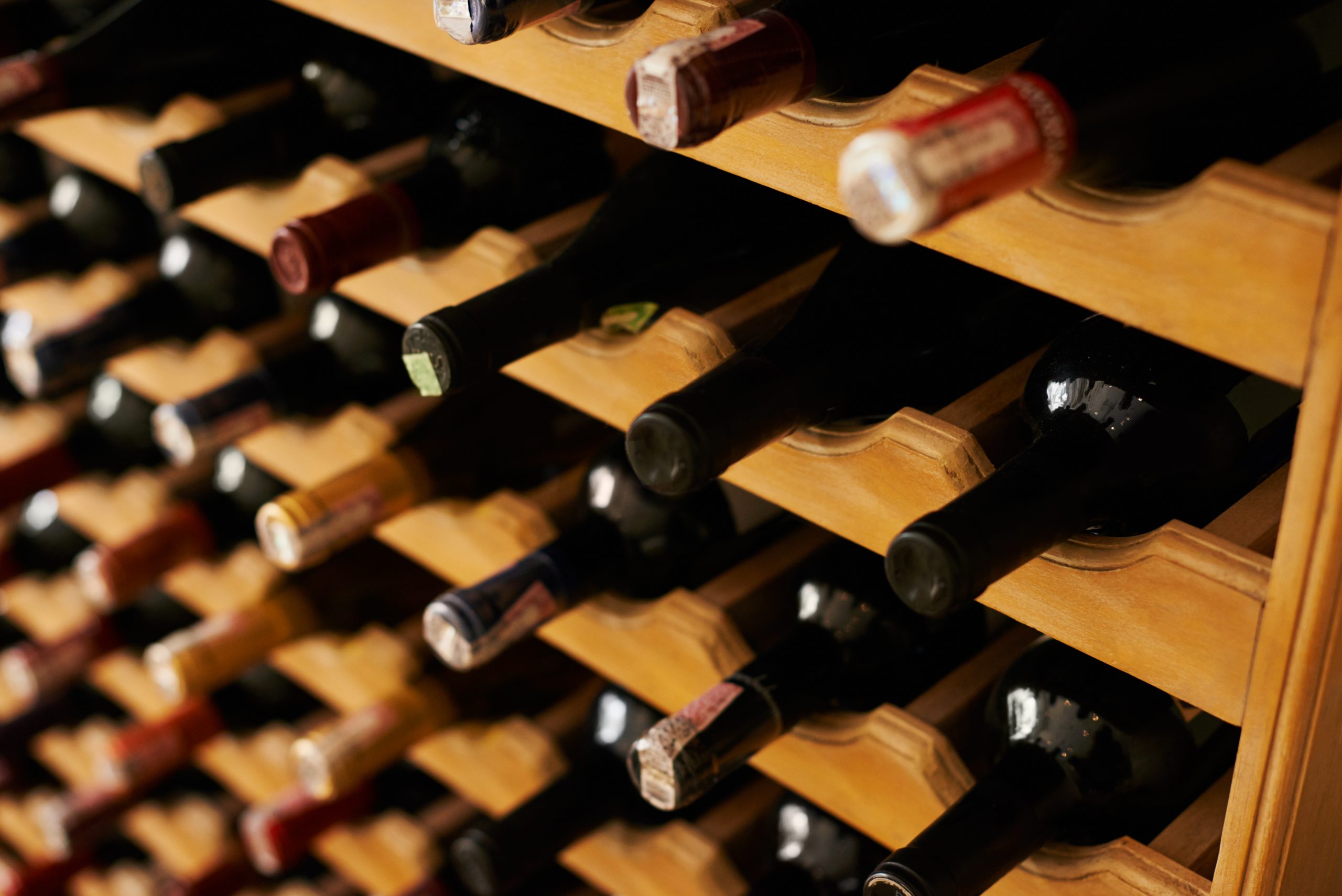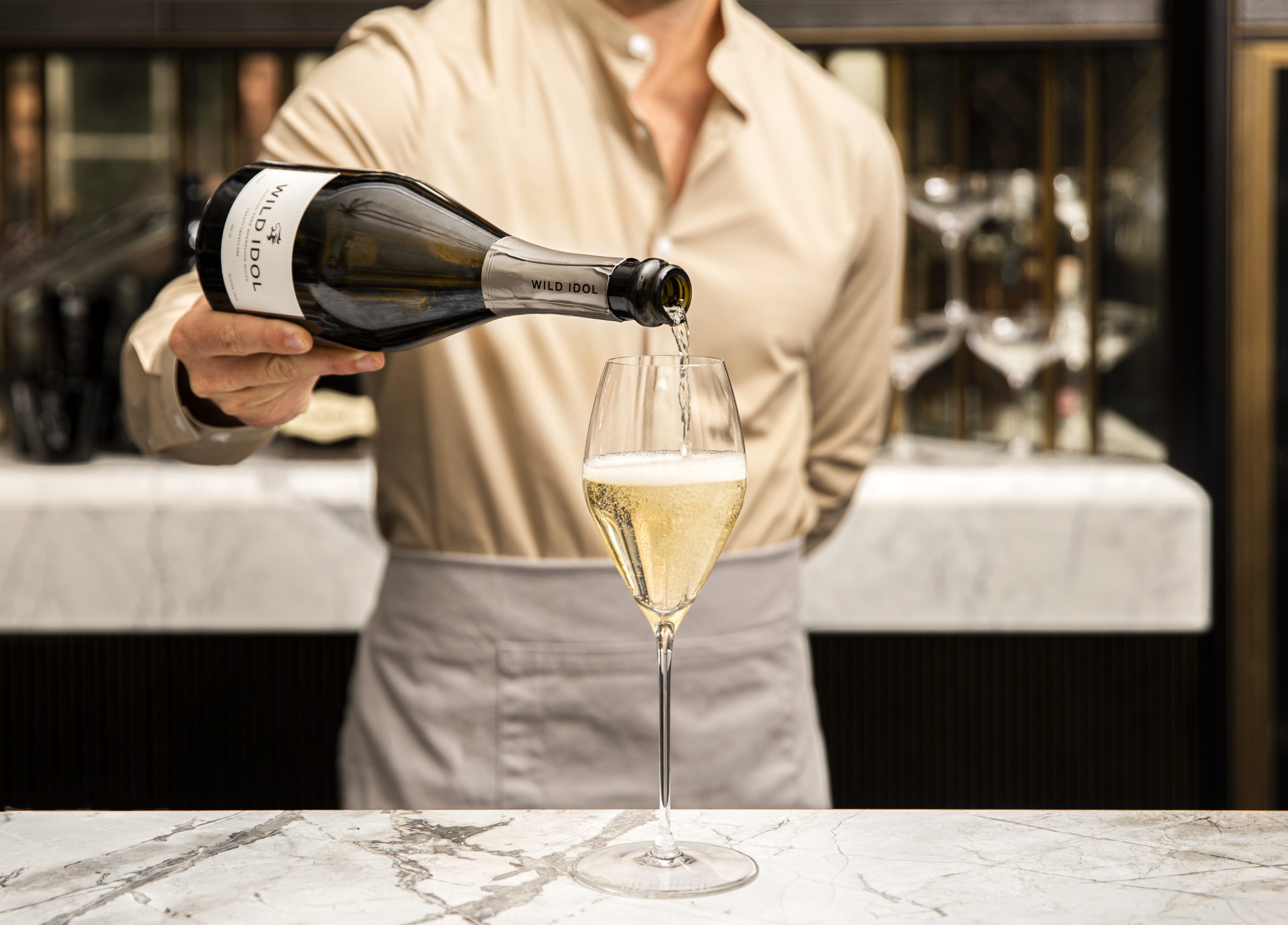This website uses cookies so that we can provide you with the best user experience possible. Cookie information is stored in your browser and performs functions such as recognising you when you return to our website and helping our team to understand which sections of the website you find most interesting and useful.
A perfect storm for faults in wines
By db staff writerWine Faults: here today, here tomorrow
Why are some wine faults on the increase? When does a wine fault actually result in a wine being faulty? And can some faulty wines be paradoxically excellent? Keith Grainger, author ofWine Faults and Flaws: A Practical Guide, writes for db.
‘Live’ trade and press tastings are back in full swing, and I’m looking back at notes made at three events, held on consecutive days. There were some stunning sparkling wines at The Wines of Great Britain event. Sadly, on one of the ‘theme’ tables three out of 52 samples were clearly faulty. One wine was haloanisole tainted (usually, and often erroneously, referred to as corked), and two exhibited the garlic and rotten cabbage characteristics of methanethiol due to severe reduction/lightstrike. Amongst the wines I tasted at Bordeaux Day, one exuded overt farmyard and medicinal aromas of compounds metabolized by Brettanomyces, another the musty odours of haloanisoles and a third horrendous burnt rubber and skunk characteristics of severe reduction. There were some truly exciting wines at Sud de France ‘Top 100’ but sadly out of the 33 whites that I tasted, three of the samples were faulty. One was undergoing a fermentation in bottle, one was haloanisole impacted, and the third showed mushroom/green hazelnut/potato aromas – perhaps on account of 2-Methoxy-3,5-dimethylpyrazine (Fungal Must Taint). Now, I never make a fuss when I find faulty wines at trade events, although I do ask if the bottle might be replaced. However, it is of concern that some in the industry think it better to sweep such problems under the carpet, and others are in denial.
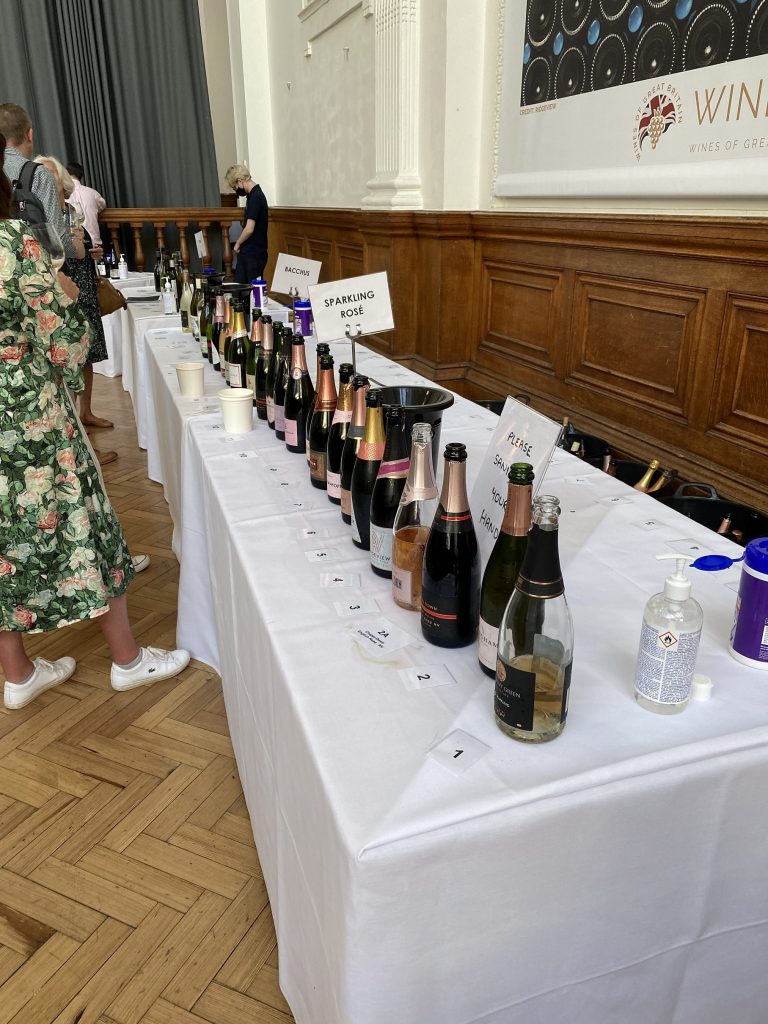
So, are faults in wine on the increase or decrease? The short answer is yes, and yes. When we consider the advances in wine technology and the general improvement in standards of winemaking in recent decades, it is perhaps surprising that coinciding with a decline in some categories of wine faults, occurrences of others are much on the increase. However, a perfect storm has led to this state of affairs, and shows little sign of abating. Indeed, incidences of faulty product reaching the consumer are greater than would be regarded as acceptable in almost every other industry. Of course defining what actually constitutes a ‘faulty wine’ is not always easy. Challenges in discussing individual faults include the compounds involved, their concentration, sensory detection thresholds and consumer rejection thresholds, matrices of individual wines, culture and education of drinkers, and even fashion. ‘Great Burgundy smells of shit’ proclaimed Anthony Hanson MW in the First Edition of Burgundy by, published in 1982. Nobody would consider that odour to be desirable in Burgundy, or any other wine today. Bearing in mind that a wine’s sensory characteristics differ according to when in its life-cycle it is assessed, a particular compound and resulting odour or taste may be considered to comprise a fault or flaw, when in the wrong concentration, in the wrong wine, in the wrong place, and at the wrong time!
There are some faults that are so destructive that they strip all enjoyment, or even drinkability from affected wines. Any presence of haloanisoles always constitutes a fault (technically speaking haloanisoles are a taint, although at low levels they may not actually ‘taint’ the wine). On the other hand, volatile sulfur compounds, can give reduced aromas that may be desirable in some wines, for example Pouilly-Fimé, but distinctly unpleasant in others. Volatile phenols, which are metabolised by Brettanomyces yeasts may be acceptable in a few styles, but in most wines the resultant farmyard and pharmaceutical odours render a wine to be faulty.
Economic and reputational costs of faults to the industry
There are no reliable figures regarding the total global financial cost of faulty and tainted wines to producers, agents, distributors, and retailers. However, there can be no doubt that it runs into many billions annually. One estimate of the economic costs to EU wine producers of haloanisoles taint in wines (so-called ‘cork taint’) is 700 million euros annually [1]. The Australian Wine Research Institute reviewed wines submitted for the International Wine Challenge competition, that the judges had rejected as faulty, during a period of 10 years from 2007 to 2016, and quantified these as to the category of fault, and also type of closure [2]. The figures regarding faults make shocking reading. Some 3.7% of the entries were faulty. Three-quarters of the faulty wines (2.8% of the entries) showed one of three most common faults – oxidation, so-called ‘cork taint’, and reduction/sulfides. Alarmingly, for sellers and lovers of aged fine wines, over 7% of the entries that were over six years old exhibited a fault.
Fortunately, product recalls due to matters other than incidences of physical contamination are rare in the wine industry. However, when bottles of faulty wines do reach the consumer, the impact upon producers’ and suppliers’ reputations is incalculable. Wine lovers, and even casual drinkers readily communicate their experiences to friends and colleagues, and with the proliferation of blogs and social media postings, news travels fast.
The decrease in occurrence in some faults
The news from the front line of wine faults, flaws and taints is not all bad: the frequency of some has declined in the last few years. In particular, there has been a considerable reduction in the occurrence of haloanisole contamination, which renders heavily impacted wines undrinkable, having the musty odour of damp hessian or dry rot. Even at trace levels, the presence of haloanisoles negates fruitiness and renders wines dull and flat. The sensory detection level of 2,4,6-trichloroanisole (TCA), the most common of the haloanisoles to affect wine, is just 1.4 – 3 ng/l (nanogrammes per litre) in still wines, and even less in sparkling wines. To visualise such a minute concentration, we might consider 1ng/l as the equivalent of one dissolved sugar cube in sixty Olympic swimming pools!
Of course, cork closures were long implicated in TCA impacted wines, but this crisis is now largely, (yet not entirely) behind us. As reported in The Drinks Business, Amorim, the world’s largest manufacturer of wine corks claims to have eliminated TCA from every cork it makes: db exclusive: The world’s biggest cork producer announces TCA breakthrough – The Drinks Business. Some other cork manufacturers are also offering a ‘TCA Free’ guarantee. Of course, there are many small cork manufacturers who do not have the systems or technology to achieve 100% haloanisole-free product. However, although the number of wines impacted by haloaniosoles due to contaminated corks has declined considerably, there has perhaps been a rise in incidences due to winery/cellar contamination. The compounds involved are highly volatile and can migrate into wine from their presence in buildings, additives and processing aids. Although contamination of wineries with haloanisoles, and their precursor halophenols, has been noted since the late 1980s, of particular current concern is the fairly recent discovery of the haloanisoles in new oak barrels purchased directly from certain coopers. It has been suggested that the flour paste traditionally used by coopers to seal the groove near the ends of the staves in which the barrel head is seated, can be a source of moulds, leading to contamination.
Another fault that has decreased in recent years is that of chemical oxidation. This issue was once a regular occurrence due to careless winemaking, and incidences rose alarmingly when injection-moulded stoppers became commonplace for inexpensive wines. Today’s co-extruded synthetic closures such as Nomacorc have regulated oxygen transmission rates, and ingression via the glass/closure interface, a major issue with injection-moulded closures, is minimal. However, premature oxidation is still with us. Generally referred to as ‘premox’ (and unsurprisingly sometimes further abbreviated to ‘POX’) the issue was first discussed in 2002, and by 2005 was regarded as a major problem affecting some white wines, particularly Burgundies. In recent years, many red wines, including some crus classés from Bordeaux have also been affected, and I have tasted several 2015s that show all the signs.
So why are some faults on the increase?
The reduction in the occurrence of some faults might have been expected with the increased sophistication and regulation of wine production, and the advance in scientific and technical knowledge of grape growers and winemakers. However, the list of faults that are increasing is long, and includes:
* Brettanomyces related faults, in some regions (and more and more in white wines);
* Mycotoxin related faults;
* Smoke taint;
* Reduced aromas;
* Lightstrike;
* Atypical Ageing;
* Heat damage;
* Fermentation in bottle.
I will discuss some of these later in this article.
There are several, inter-related, reasons which contribute to the perfect storm, resulting in the increased occurrence of some faults. These include:
* Climate change ;
* Higher pH and lower acidity in musts and wines;
* Production of softer styles of red wine that customers are perceived to want;
* Increases in residual sugar in many branded and ‘entry-level’ wines;
* Reduction in free and molecular sulfur dioxide (SO2) levels;
* Bringing wines to market early;
* Bottling white and rosé wines in clear glass.
It is perhaps easy for producers to put blame on the consumer. The styles of wines that consumers want, or are perceived by the industry to want, have certainly changed in the last 20 years or so. As Jokkie Bakker and Ronald J. Clarke note, ‘changes in winemaking culture as a result of changes in consumer preference for the required style of wine has led to an increase in some off-flavour formation, for example volatile ethyl phenols (which are by metabolised by Brettanomyces)’ [3].

Climate change has resulted in higher grape sugars, higher pH, and lower acidity in harvested grapes. Each of these presents dangers. Although picking usually takes place earlier in the season than was historically the case, harvests are still often delayed to maximise so-called ‘phenolic ripeness’, and avoid any hint of greenness. In the case of red wines, and particularly those at so-called ‘entry-level’, tannins are softer, and levels of residual sugar in the packaged wine have often increased. Inexpensive wines are usually brought to the market very quickly, sometimes within a few months of harvest. Time is money, and there may be little time or budget for all desirable stabilisation procedures to take place. Finally, the consumer and especially the serious wine lover, wants wine to be a natural, agricultural product that has been turned into something wonderful by an artisan, not a scientist. Leaving aside the category of Natural Wines, many producers strive to make wine as ‘natural’ as possible, by reducing interventionist techniques and minimising chemical and biological additions, including those that may increase stability and prevent the onset of certain faults. In particular inadequate levels of molecular sulfur dioxide are commonplace.
Brettanomyces, and the importance of molecular sulfur dioxide in avoiding related faults
Brettanomyces related faults are on the increase in some regions and wine styles. Historically almost entirely problem that affected reds, metabolised compounds are more and more being found in white wines.
We all know that sulfur dioxide is added at several stages of the winemaking process by the vast majority of winemakers for its antioxidant and antimicrobial properties. It should be noted that even ‘no added sulfur’ wines may contain several milligrammes a litre (mg/l) of SO2 as it is naturally produced by yeasts during the alcoholic fermentation process. Total sulfur dioxide levels have generally been reduced in recent years. In red wines lower levels help achieve softer, rounder red wines that are attractive for early drinking – SO2 retards the polymerisation of tannins.
It is generally accepted that a minimum level of 10 mg/l of free SO2 needs to be maintained in bottled wine for it to be an effective antioxidant, but the importance of molecular sulfur dioxide remains misunderstood by many winemakers. A concentration above 30 mg/l of free sulfur dioxide at bottling is often regarded as adequate to offer protection from the actions of yeasts and bacteria. This is often not the case, for it is only molecular SO2 that has antimicrobial properties, and the amount of molecular SO2 is just a fraction of the free SO2, the figure varying according to the wine’s pH. Put simply, wines with a high pH are less protected against microbial activity, particularly the growth of Brettanomyces. Thirty mg/l free SO2 might be sufficient for wines with a pH of up to 3.5, but if it is as high as 3.8, then the amount of molecular SO2 is effectively halved. A given amount of free sulfur dioxide is 10 times more effective against microbial activity at a pH of 3 than at pH 4! One important study [4] found that 17 of 35 Brettanomyces strains examined were tolerant to free SO2 at 30 mg/l in wine of pH 3.4 (this equates to a molecular sulfur concentration of approximately 0.75mg/l). There are numerous other reports of 30 mg/l being totally ineffective. Further, the diminution of concentrations of molecular SO2 during storage should also not be underestimated. In another study [5], the levels of molecular SO2 of each of the wines analysed dropped considerably after 80 days in bottle: in one example, a wine with an initial pH of 3.74 and molecular SO2 of 0.52 mg/l fell to 0.19 mg/l after 80 days of bottle storage. In the 130 days from the beginning of the experiment, 1740 µg/l of ethyl phenols were produced in this wine (a level that would probably have a devasting impact upon the aroma and taste profile), revealing the initial concentration of molecular SO2 to be totally ineffective against Brettanomyces growth. A simple, but far from ideal, way of stating the sensory detection threshold for Brettanomyces characteristics in red wine is just to consider the concentration of 4-Ethylphenol, one of the main compounds metabolised. Depending upon the wine matrix, this is usually detectable somewhere in the range of 300–600 µg/l.
Lightstrike
Lightstrike is now an all too frequently encountered fault, caused by the formation of undesirable volatile sulfur compounds consequential to exposure of wine to light, particularly UV light, but also visible light at the blue end of the spectrum. The fault, which can have serious organoleptic impacts, is most likely to affect sparkling wines and white and rosé wines – red wines have a higher degree of protection due to their higher levels of phenols. Whilst there can be little doubt that white and rosé wines can look tempting when bottled in clear glass (flint) bottles, there is no doubt whatsoever that this can be hugely damaging to the product. The photo, taken in a supermarket in France, shows two bottles of Sauternes from the same property and same vintage. The bottle on the left has been taken from the shelf and is the victim of lightstrike, the bottle on the right is newly removed from the carton.
Partner Content
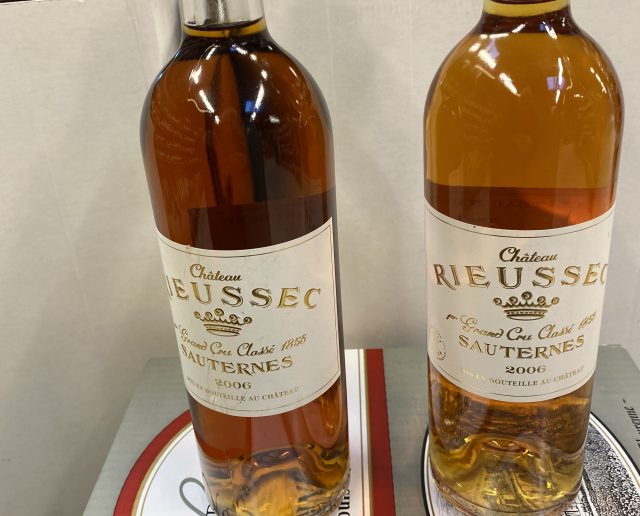
Battles between the production and marketing teams regarding packaging are commonplace, but even wines of the highest quality are often packaged in flint glass bottles. Louis Roederer Cristal is bottled in clear glass, but this is wrapped in orange coloured cellophane. Alexis Deligny of Louis Roederer says this filters up to 98% of UV light. Interestingly, Louis Roederer was the first major Champagne house to switch to brown(amber) bottles (for wines other than Cristal) in 2010; since then, several other houses have followed suit including Piper-Heidsieck and Drapier, so it would seem that at last the Champagne industry is beginning to take the problem seriously. However, many rosé sparking, and the majority of rosé still wines are still bottled in clear glass, and these may sit on supermarket shelves for weeks prior to sale.
Lightstrike may be detected on the appearance, nose and palate, and the worst affected wines may be undrinkable. There is a deepening of colour, sometimes considerably so. The nose may exude odours of sulfur, skunk, garlic, or cooked cabbage. There can also be aromas of ‘marmite’, wet wool, or wet cardboard. The severity of the fault may depend upon: the spectrum of the light source; the intensity of the light; the irradiation duration; the optical properties of the bottle; the light absorbing species and composition of the wine. With regard to the spectrum of the light source, the most damaging wavelengths to wine are below 520nm, especially in the range of 325–450 nm. UV has wavelengths below 400nm and is invisible to most humans; visible light wavelengths are from 400 to 760 nm. UV light-resistant bottles can prevent the transmission at these wavelengths. Clear glass filters just 10% or so of UV light, green between 50% and 90%, and brown from 90% up to 99%, at wavelengths below 520 nm. There are some variances, and particularly with clear glass: thicker’ bottles filter out more UV light. There has been a growing movement to bottle wines in lighter-weight glass – this has been primarily led by environmental concerns, particularly with regard to the impact of transporting additional weight. A recent study by considered the impact of light on white wines packaged in flint glass and dark green glass and stored in ‘supermarket-like’ conditions [6]. The room was air-conditioned at a constant 20°C. All flint glass bottled wines developed lightstrike after 20–40 days shelf life. The wines packaged in green glass had a high degree of protection for 50 days or more (50 days was the length of the experiment). In fact, white wines packaged in clear glass bottles can be affected after just 3.3 hours exposure or, to the same degree, in green bottles after just 31 hours, Sparkling wines will be affected after 3.4 hours exposure in clear glass, or 18 hours in green glass. Wines exposed to direct sunlight may receive several thousand times the amount of UV-A radiation as that from fluorescent lights.
Prevention of lightstrike
Certain volatile sulfur compounds are produced from riboflavin and amino acids by a photochemical reaction with light. Riboflavin (vitamin B2) is a very photosensitive compound and has strong absorption of UV light. It occurs naturally in grapes, and further amounts are produced during the alcoholic fermentation by yeast and released during autolysis. Following fermentation, the level may reach 110–250 µg/l. If the wine is aged on the lees, the level will increase further. A level of riboflavin below 80–100 µg/l could limit the development of lightstrike in bottle. Photogeneration produces hydrogen sulfide, dimethyl disulfide (DMDS), dimethyl sulfide, and methanethiol from the sulfur-containing amino acid methionine and cysteine. Wine naturally contains between 1 and 4 g/l of methionine and cysteine. During the bottle ageing of traditional method and transfer method sparkling wines, prior to disgorging, sulfur-containing amino acids are freed from yeast cells as part of the process of autolysis, and if exposed to UV light, the production of DMDS in such wines is particularly likely. To make matters worse, the bubbles amply the sensory perception of the off-aromas. The photodegradation of iron tartrate to glyoxylic acid and formic acid also contributes to the light-struck effect.
There are several vinification steps that help prevent lightstrike. These include using low riboflavin-producing yeast strains during alcoholic fermentation, the addition of tannins that have redox properties and the addition of glutathione (GSH). The structure of GSH has a thiol group to which methanethiol can bond. Clear glass should not be used for bottling wines that are likely to be exposed to UV light for prolonged durations. Obviously wine should be stored away from light, particularly light in the range of 325–450 nm. I have found the highest incidences of light-struck wines in restaurants that have wines on display. The exposure to light also depletes sulfur dioxide levels, and increases oxygen uptake which may lead to premox and other faults.
Mycotoxins and faults harmful to health
Most wine faults, however unpleasant they may be from an organoleptic perspective, are not generally harmful to human health, at least at the concentrations in which they may be found in wine. Wine has a low pH and pathogens harmful to humans will not generally grow in the product (although we should remember that every year somewhere in the world people die as a result of consuming ‘fake’ wine). However, it is of concern that there is an increase in the incidence of mycotoxins in wines, due to their production by some of the microbial populations on vines. This is perhaps another consequence of climate change. Related off-flavours, which were historically noted only occasionally, have been detected at a much higher frequency during the last 15 years. There are some compounds of microbiological origin that have been shown to be harmful, or potentially harmful to humans. The most important of these are biogenic amines, ochratoxin A and ethyl carbamate. Ethyl carbamate is classified as ‘a probable human carcinogen’ (Group 2A) by the International Agency for Research on Cancer (IARC) and several countries have set limits for its concentration in wine. Biogenic amines, that can have a ‘blood-like’ odour and taste, are toxic at high concentrations, and some people have an intolerance at the levels very often found in wine. Ochratoxin A is a known carcinogen in some animals and a suspected human carcinogen by IARC (Group 2B); accordingly limits to its concentration in wine have been set for member states of the EU at 2 µg/l . In addition, some chemical compounds which may be found in wine can be harmful, particularly phthalates that can be hormone disruptors in humans. Their presence in wine is always due to contamination from an external source, such as the epoxy resin lining of concrete fermentation or storage vats. In a research paper published in 2014, Pascal Chatonnet et al. revealed that significant quantities of dibutyl phthalate (DBP) had been found in 59% of the (French) wines analysed [7].
Some faults are ‘under the radar’
There are hot topics that frequent the murky world of the discussion of wine faults. Hardly a week goes by without smoke taint being in the news – exposure of vines or suggested methods to possibly remove the taint. However, many faults remain ‘under the radar’. A prime example is ‘atypical ageing’.
Atypical ageing (ATA)
This fault, often confused with premature oxidation, has been described as ‘one of the most serious quality problems in white wine making in nearly all wine producing countries’ (Henick-Kling et al 2009) [8]. It has been estimated that up to 20% of USA wines might be affected. Atypical ageing remains little discussed in the industry at large. White wines suffer a major loss of varietal characteristics and fruity aromas and develop undesirable odour and palate characteristics, which may include mothballs and wax. The fault, often confused with premature oxidation, has been described as: ‘one of the most serious quality problems in white wine making in nearly all wine producing countries’ [8]. In some years up to 20% of German wines have been rejected for ‘quality wine’ status due to ATA, and up to 20% of US white wine might be affected [9]. Problems are most likely to occur in hot, dry years when vines suffer hormonal stress. The phytohormone indole-3-acetic acid (IAA) may be present in grapes from vines that have suffered stress, and this degrades in winemaking to form the compound 2-aminoacetophenone (2-AAP), the main marker for ATA.
Fermentation in Bottle (unwanted).
Although thankfully a rare event, unwanted fermentation of wine in bottle is again on the increase. Professor Manuel Malfeito-Ferreira notes that according to his experience, ‘refermentation problems have increased in the last years in red wines because of the addition of concentrated grape juices to make softer wines in accordance to modern market demands’ [10]. Australian red wines saw an average residual sugar (RS) increase from 0.5 g/l in 1998 to 2.1 g/l in 2008 [4], and today a concentration of 5 g/l is far from uncommon, particularly in so-called entry-level wines. Levels of RS levels that are over 4 g/l pose the greatest risk.
Of course, in such cases, if any viable yeasts find their way into the bottle, refermentation is likely to occur. A pre-bottling sterile filtration will trap any yeasts and bacteria from the wine, although many producers of high-quality wines do not undertake this, believing it negatively modifies aromas and flavours and compromises quality. In any case, there are several areas of possible exposure post filtration. Wine bottles are delivered to wineries on shrink-wrapped pallets, and such wrapping is easily and frequently damaged. Whilst ideally winery bottling facilities are isolated from production areas, yeast or bacteria contamination of empty bottles and corks or other closures frequently happens. With an inadequate pre-bottling rinsing, the seeds for disaster are sown. Bottling equipment too is easily contaminated with yeast or bacteria, and careful maintenance and thorough cleaning are essential.
Tainting bugs
Much has been written about the impact of smoke taint on grapes, which first became a big problem in Australia in March 2003, and since then has been a regular occurrence. Australian harvests have, to an extent, been impacted every year from 2013 to 2020, a particularly disastrous year. The impact that ‘tainting bugs’ can have is less well known.
There are, of course, many pests that may affect the grapevine and its fruit, and the prevention of crop damage, caused by a wide range of insects has long been a battle for growers. However, since the beginning of this century three pests have begun to become a problem for winemakers in some regions. The seven spot ladybird is common in Europe and may infest grape clusters on the vine. The multicoloured Asian Ladybeetle is now common in the United States, Canada, France, the United Kingdom, and South America having been introduced as a means of biocontrol for aphids. Unless removed during grape sorting, they can be responsible for imparting 2-Isopropyl-3-methoxypyrazine (IPMP) and other methoxypyrazines. The first widely reported ladybeetle taints were in USA in 2001, and there have been numerous subsequent incidences in many regions, including Burgundy. Affected wines can show pronounced peanut flavours, unwanted herbaceous aromas, and a dull earthiness.
The Brown Marmorated Stink Bug (BMSB) is a mottled brown, shield-shaped bug. It is a pest to many species of plant, including corn, soya beans, hazel, and pecan nuts. A native of eastern Asia, particularly China, Korea, and Japan, the BMSB first appeared in the United States in Pennsylvania, where it was identified in 1998. Since then, it has spread rapidly, initially through the north-east, and by 2010, it was being described as a large-scale problem in Mid-Atlantic vineyards. By September 2017, it been identified in some 44 states, including (and perhaps most alarmingly) in California, Washington State, and the Willamette Valley in Oregon. It is also present in four Canadian provinces. It was first reported in Europe in 2007 and is now widespread in Italy and Hungary. There is a constant battle to keep the pest out of Australasia. In countries outside of Asia, the bug has no natural predators. The New Zealand Institute of Economic Research has estimated that if the pest becomes established there, the economic loss in horticultural exports could amount to $4.2 billion a year.
Wines made from grapes infested by BMSB contain (E)-2-Decenal, also known as trans-2-decenal which gives the characteristic BMSB taint to wines. Other undesiresble aldehyde compounds are also secreted when bugs, present in grape clusters, become stressed during winemaking processes. The bugs often migrate to the centre of the cluster close to harvest and may not be apparent, even in the sorting of whole bunches. The inclusion of three live bugs per cluster is sufficient to raise the trans-2-decenal level in the resultant wine to above consumer rejection threshold. Impacted wines have coriander, herb-like, green, and musty odours and flavours. There is generally a loss of black fruit, red fruit, and floral characteristics in the wine.
Back to the future
There is perhaps a parallel with faults in wine and human disease prevention and treatment. There is always a new threat, and as the ‘cure’ for one is found, another rears its ugly head. It was always thus, and perhaps always will be. However, the producer’s armoury in the battle against faults is constantly growing. For example, chitosan, marketed by Lallemand as ‘No Brett InsideTM’ is an effective treatment to reduce the number of viable Brettanomyces cells in bulk wine, although alternative treatment is necessary to address ethyl phenols that have already been produced. Dimethyl dicarbonate, marketed as Velcorin can be an effective inhibitor against fermentation in bottled wine.
The methods, processing aids, and additives that may be used to prevent and treat wine faults may sometimes have a negative effect upon quality. There is always discussion as to their organoleptic impact, and their utilisation does not sit comfortably with notions of wine being a natural product, and of ‘minimum intervention’. It is a sobering thought that some of the greatest wines of all time are technically faulty. So what is the price for fault-free wine, and is it one that the industry and wine lovers are prepared to pay?
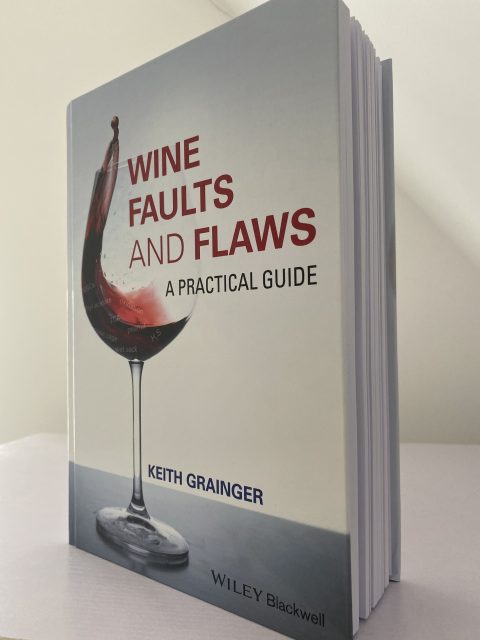
Wine Faults and Flaws: A Practical Guide by Keith Grainger is published by WILEY Blackwell: Wine Faults and Flaws: A Practical Guide | Wiley. It is available in hardback (528 pages), as an e-book and on Kindle. For a review see: Wine Faults and Flaws: a Practical Guide by Keith Grainger – Wine Ireland
References
1. European Commission CORDIS (2016). Electronic Nose To Detect Haloanisoles In Cork Stoppers – Final Report Summary. https://cordis.europa.eu/project/rcn/111040/reporting/En
2. Wilkes, E. (2017). Is it the closure or the wine? Wine & Viticulture Journal: 22–25. https://www.awri.com.au/wp-content/uploads/2015/10/s1879-Wilkes-WVJ-31-6-2016.pdf
3. Bakker, J. and Clarke, R.J. (2012). Wine Flavour Chemistry, 2e. Chichester: Wiley–Blackwell.
4. Conterno, L., Joseph, C.M.L., Arvik, T.J. et al. (2006). Genetic and physiological characterizationof Brettanomyces bruxellensis strains isolated from wines. American Journal of Enology and Viticulture 57: 139–147.
5. Coulon, J., Perello, M.C., Lonvaud-Funel, A. et al. (2010). Brettanomyces bruxellensis evolution and volatile phenols production in red wines during storage in bottles. Journal of Applied Microbiology 108 (4): 1450–1458. https://doi.org/10.1111/j.1365-2672.2009.04561.x.
6. Arapitsas, P., Dalledonne, S., Scholz, M. et al. (2020). White wine light-strike fault: acomparison between flint and green glass bottles under the typical supermarket conditions. Food Packaging and Shelf Life 24: 100492. https://doi.org/10.1016/j.fpsl.2020.100492.
7. Chatonnet, P., Boutou, S., and Plana, A. (2014). Contamination of wines and spirits by phthalates: types of contaminants present, contamination sources and means of prevention. Food Additives & Contaminants A: 1. https://doi.org/10.1080/19440049.2014.941947.
8. Schneider, V. (2014). Primer on atypical aging. Wines and Vines 4: 45–51.
9. Henick–Kling, T., Gerling, C., Martinson, T. et al. (2009). Studies on the origin and sensory aspects of atypical aging in white wines. 14–16 April 2008, Trier, Germany. Proceedings of the 15th International Enology Symposium, International Association of Enology, Management and Wine Marketing, Zum Kaiserstuhl 16, 79206 Breisach, Germany.
10. Malfeito-Ferreira, M. (2019). Spoilage yeasts in red wines. In: Red Wine Technology (ed. A. Morata), 219–235. London: Academic Press.
Related news
BREAKING: Trump’s 200% tariff threat leaves wine world reeling

